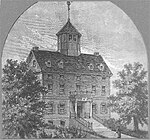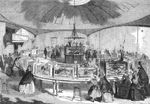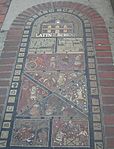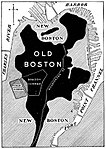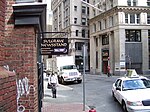Ordway Hall (Boston)
1852 establishments in Massachusetts1864 fires19th century in BostonBlackface minstrelsyCultural history of Boston ... and 3 more
Financial District, BostonFormer buildings and structures in BostonFormer theatres in Boston

Ordway Hall (est.1852) was a theatre in Boston, Massachusetts located off Washington Street in the former Province House. John P. Ordway established and managed the hall, which specialized in "negro minstrelsy," particularly the Ordway Aeolians, his own troupe.
Excerpt from the Wikipedia article Ordway Hall (Boston) (License: CC BY-SA 3.0, Authors, Images).Ordway Hall (Boston)
Province Court, Boston Downtown Boston
Geographical coordinates (GPS) Address Nearby Places Show on map
Geographical coordinates (GPS)
| Latitude | Longitude |
|---|---|
| N 42.357133333333 ° | E -71.059838888889 ° |
Address
Province Court 1
02108 Boston, Downtown Boston
Massachusetts, United States
Open on Google Maps
